36 projects of unmanned vehicles
Many are developing unmanned cars (self-driving car). Separate developments are described in detail at various sites. But in order to get a complete picture of the activity in this area, it is better to bring them all together in one article. Below are all the major players and the success they achieved in mid-2016. But first, a very brief story.
In 2004, DARPA announced the first competition for fully autonomous vehicles. The cars were supposed to drive 230 kilometers without human intervention ( 1 ). Nobody got to the finish line then. Since then, much has changed. In 2005, the race was the first winner (the Stanford team) and today all major automakers, start-ups and a significant number of IT companies are involved in the development of unmanned vehicles. For example, …
Renault-Nissan
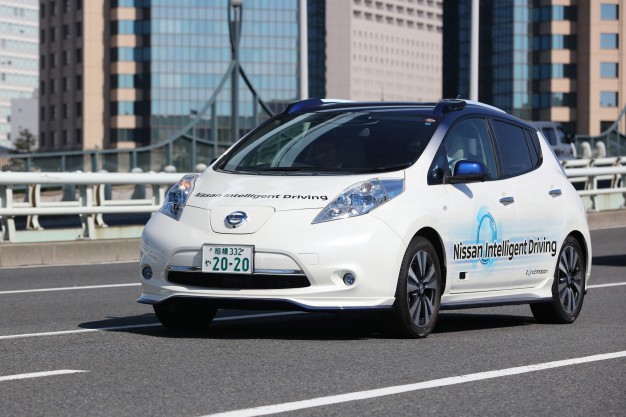
')
A large-scale approach to the creation of unmanned vehicles applies the corporation Renault-Nissan. She plans to create 10 cars with autonomous driving functions until 2020. By 2018, they will be able to drive without a driver and change lanes, and by 2020 they will cross the intersections by themselves in traffic jams.
Tesla
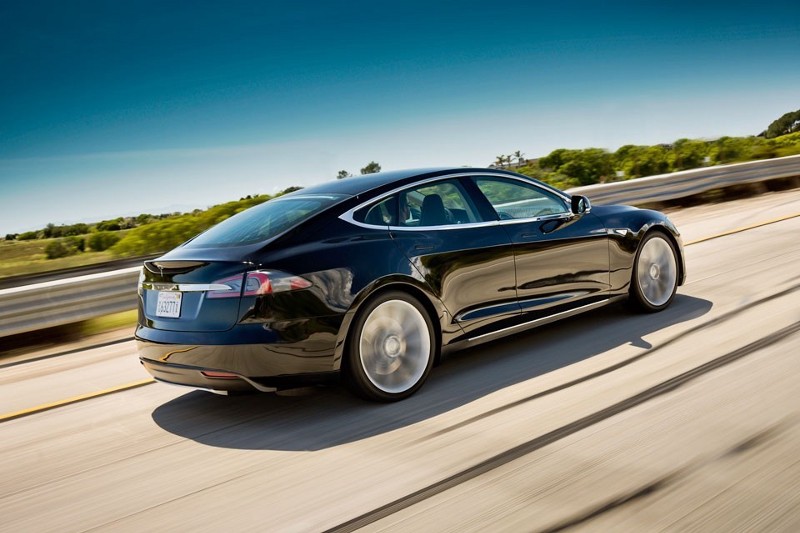
Of course, unmanned vehicles are being developed by Tesla. With the help of a software update, she introduced autopilot in her cars ( 2 ). It still does not work everywhere and ignores traffic lights, but it is able to drive along a regular road without a driver. Ilon Musk promises that they will make the car completely unmanned within two years, by 2018.
Google car
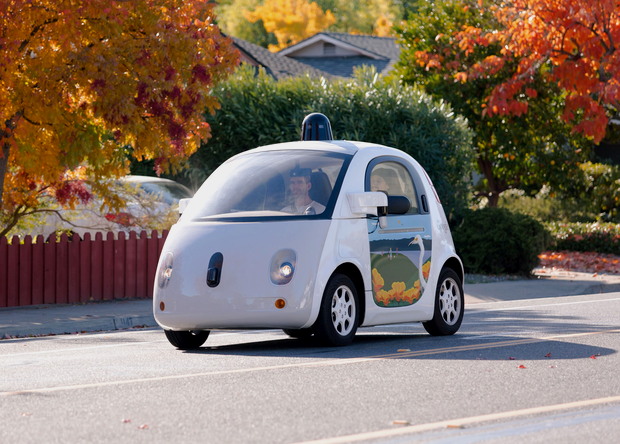
Alphabet unmanned vehicles were the very first and to date have driven more than 2.2 million kilometers. Over the past 5 years of testing there was information about only one accident caused by a car in February 2016. ( 3 ) It is not yet clear how and when the company is going to sell these cars to people.
F 015 Luxury
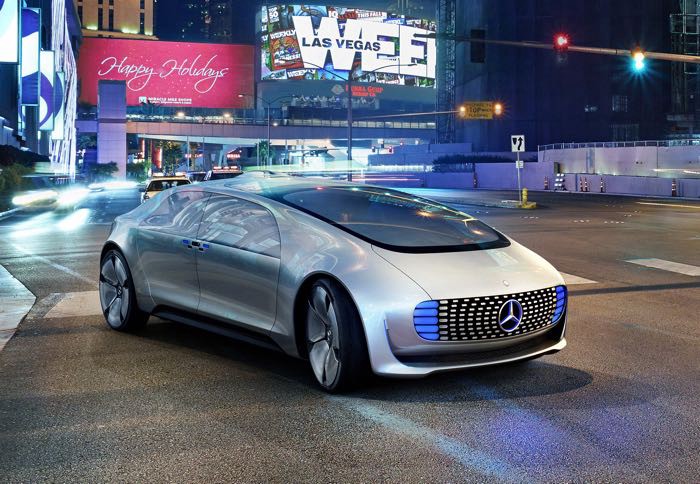
Presented by the corporation Mercedes - F 015 Luxury is already used to ride enthusiastic journalists. Mass release, however, only by 2030.
Faradey future

Faradey future is a very unusual company. Announcing its existence in 2015, this “stealth mode startup” announced a hypercar, building a factory in Nevada for $ 1 billion and promised to create a completely new system for moving people
The key element of the system will be unmanned vehicles that can be used by any person, not just the owner. These are extremely ambitious plans, but the company receives significant funding from China, and it is rumored that the start-up that has come from nowhere is just a front for Apple.
Delphi drive

The car of a major manufacturer of automotive components Delphi drive drove across America for 99% autonomously. Its creators captured it in the form of a web series and believe that they will make history with this achievement.
Baidu / BMW
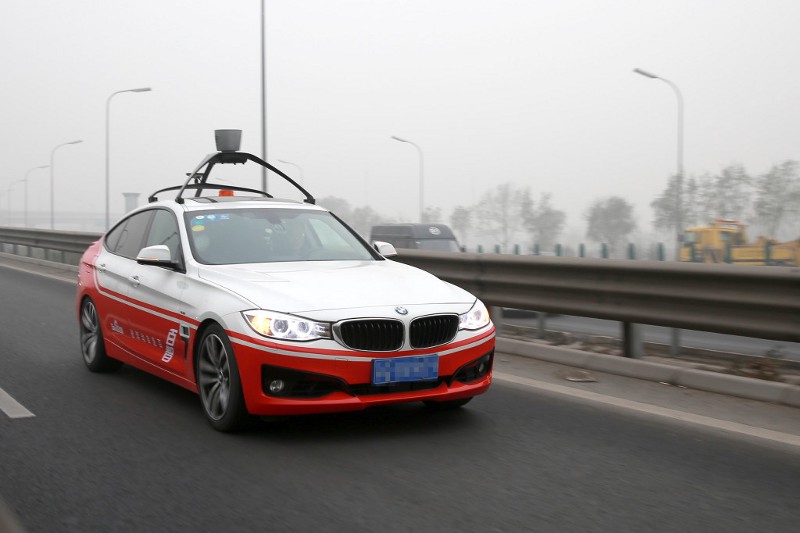
The combination of search engine and automaker seems to be optimal for the project of an unmanned vehicle. At least the largest Chinese search engine Baidu and BMW began testing unmanned vehicles in late 2015. They declare that they are not going to make it fully autonomous and will leave the driver able to take control when he wants.
Peugeot-citroen

Unmanned vehicles of the French corporation Peugeot-Citroen independently drove from Paris to Amsterdam. The company plans to introduce elements of autonomy in their cars by 2018, and make them completely unmanned (like everyone else) by 2020.
Audi

In order to stand out from other projects, Audi has made its car - the Audi RS7 is speedy and is testing it on racetracks. Already, he ideally passes the track and accelerates to 240 kilometers. Some even fear that this is the end for auto racing ( 4 ). The Audi A8 will be the first production car with an autopilot (but not completely autonomous), and it will be presented in 2017.
General Motors / Lyft

General Motors and Lyft (competitor Uber) are also going to make a revolution in transport. With the help of unmanned vehicles, they plan to convince people to abandon car ownership and thereby rid the cities of traffic jams and make transport faster and safer (the same idea as Faradey future). Reliable cars should be ready by 2020, and changing the transport system depends not only on technology.
Uber

Uber (a taxi application and the world's most expensive startup) hopes to do the same alone. For a start, he plans to rid his taxis of drivers. To this end, he massively hires specialists and began testing machines in the spring in 2015.
Ford
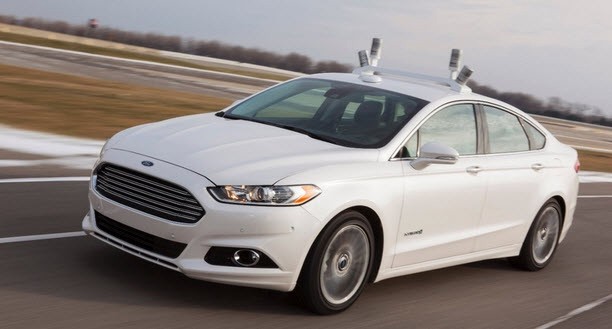
Ford has as big plans for unmanned vehicles as for electric cars. The corporation is testing its cars in difficult conditions (snow, night, ice) and expects to release them in 2019.
Volvo Concept 26

Volvo is going to introduce a streaming system and a folding seat into its Concept 26 system. It is necessary to do something while the car will go. Already in 2017, one hundred volvo cars will be tested on the roads.
Kia motors
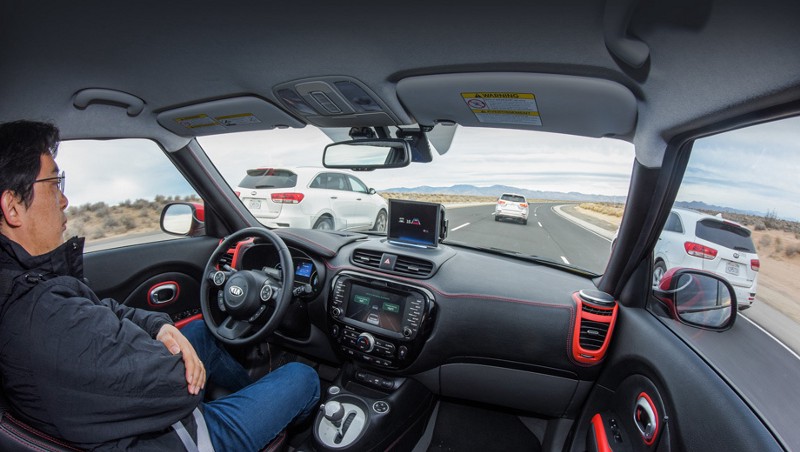
Kia motors announced the Drive wise program, in which the unmanned vehicle is planning to be the latest to the 2030m after the others. But by 2020, certain elements of autonomous driving will be introduced.
Honda
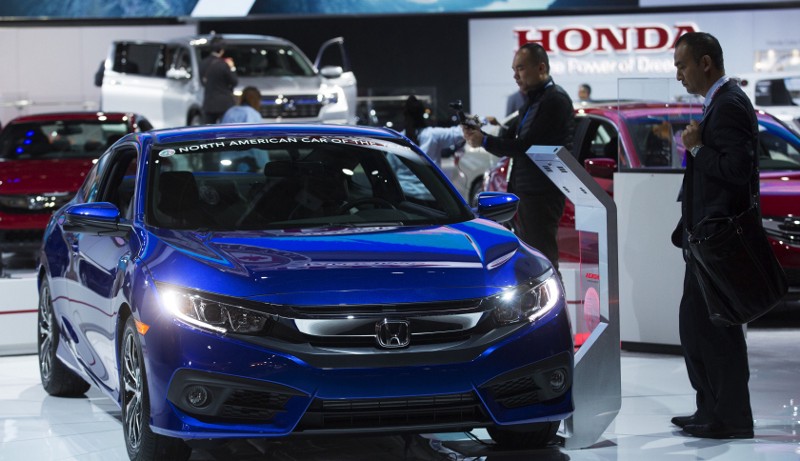
Honda became the tenth company to obtain permission to test its unmanned vehicle in California. Elements of autonomy will be introduced in the next car model of the corporation.
Leeco

LeEco is an attempt by a Chinese company to imitate Tesla. With the support of Aston Martin, the startup plans to create an unmanned electric car by 2020. So far, his autonomous movement abilities have been demonstrated only on presentations.
Bosch

The German corporation Bosch has a clear vision of the development of autonomous cars until 2020. It includes not only unmanned driving, but also a touch screen for sending messages, watching online video, and so on. The company has been testing its unmanned vehicles in Germany since 2013, and 2,000 people work on the development of autonomous driving elements in the corporation.
Comma.ai

The American hacker, the prodigy George Hotz, hacked the Iphone at the age of 16, at the age of 25 he built a car in his garage, which could drive without a driver. But it is not known yet how reliably the car will drive in all cases. In 2016, the hacker founded the startup Comma.ai, and hires specialists. At the presentations, George Hotz says that his project is much cheaper and better than any other development of unmanned vehicles, but he is generally characterized by extreme self-confidence.
Volkswagen

Volkswagen only in 2016 announced the development of unmanned vehicles. Nevertheless, its leaders say that the company will build reliable autonomous cars "faster than competitors do."
Toyota
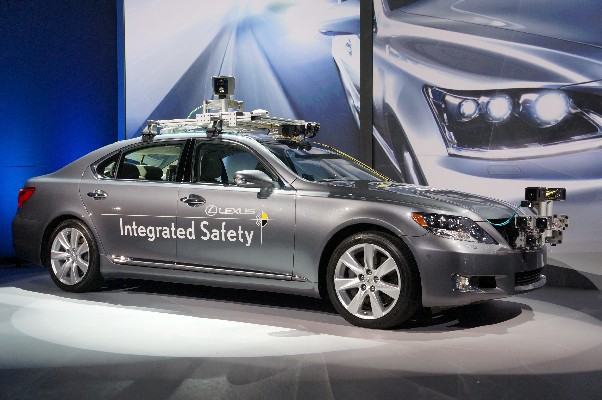
The efforts of universities, start-ups and even IT corporations will have little effect if this movement towards the creation of unmanned vehicles will not be supported by large auto manufacturers. Toyota ( 5 ) is the world's largest automaker and has long ignored these trends. Only at the end of 2015, the Japanese corporation invested $ 1 billion in the laboratory for researching the technology of unmanned driving and now expects to provide a fully autonomous car in 2020
Kamaz

For the project of an unmanned Kamaz funds are allocated within the state. program "Avtonet". Already there is a prototype. Kamaz
expects to refine the unmanned model by 2022 and bring it to public roads by 2025-2027. In general, the development of unmanned vehicles in Russia will allocate 10 billion rubles in the next four years
Mercedes-Benz Future Truck

Are tested on the roads and trucks Mercedes. Judging by the logo, Mercedes expects to start selling them in 2025.
Otto
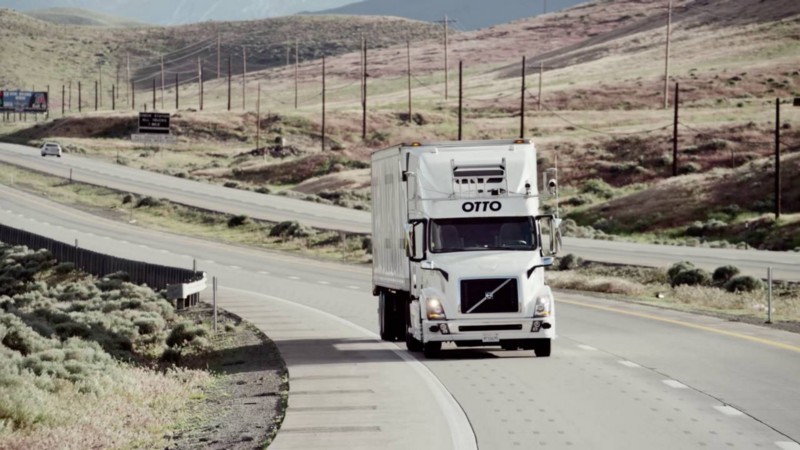
A detached from Google development team in mid-2016 founded a startup Otto aimed at creating unmanned trucks. Company executives are convinced that the automation of trucks will bring the greatest economic benefits. The company does not plan to build its own trucks, but only to upgrade the existing ones for self-relocation.
Komatsu trucks

Back in the early 2010s, the Japanese company Komatsu presented mine trucks working without people. Their implementation allows you to abandon the cost of drivers and besides, they can work around the clock. In recent years, mining companies have been buying them in large quantities.
Japanese taxi

By the Olympics in Tokyo in 2020, Japan expects to introduce unmanned taxis that will transport athletes. Testing of these machines will begin in 2016.
Nutonomy
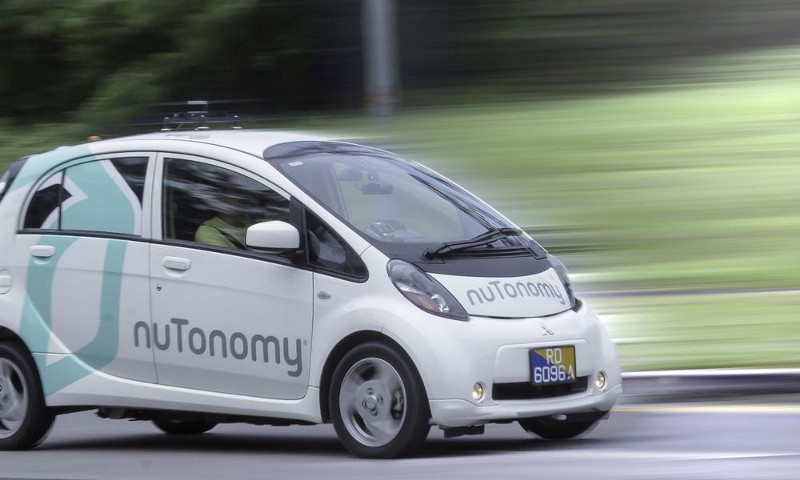
Another unmanned taxi service should appear in 2018 in Singapore
Snuber
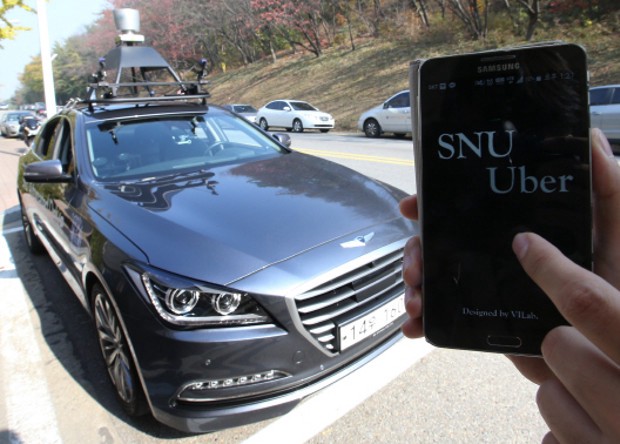
In Seoul University, they also made unmanned taxis, it is being tested and driving students to the right place.
KB Aurora

Unmanned vehicles are closer than they seem. For example, the Petersburg company Gruzichkof entered into an agreement with the resident of Skolkovo KB Aurora to develop and implement the possibility of autonomous driving on their gazelles. The implementation deadlines have not yet been named, but gazelles are already being tested.
Wepod
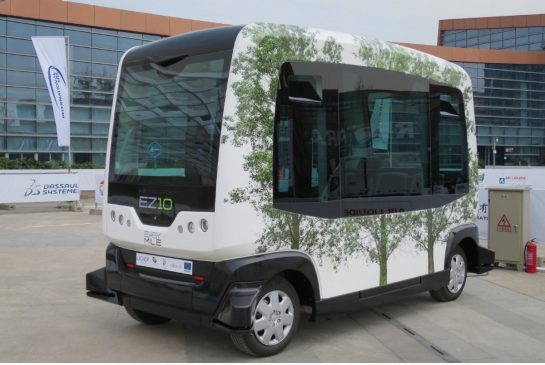
Unmanned WePod buses are being tested in the Netherlands and have already entered public roads. Their maximum speed so far, unfortunately, is only 25 km / h. In the coming years, the company is going to start transporting passengers throughout the country.
BestMile
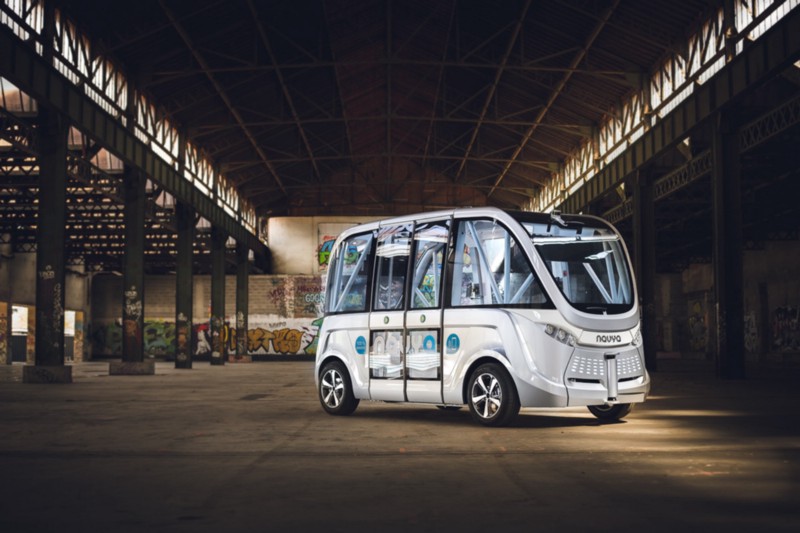
In spring 2016, the Swiss company BestMile launched its unmanned buses on public roads. Their speed is also only about 20 km / h.
Yutong bus

The Chinese did not begin to create a separate bus, but simply converted an ordinary passenger bus into a drone. Not the fact that they even warned the passengers. So far, it is being tested on a 32-kilometer track and accelerates to 68 km / h.
Volgabus

In addition, the domestic bus manufacturer Volgabus plans to present the first unmanned bus by the end of 2016, and to ensure the successful relocation of its unmanned buses in urban environments by the World Cup in 2018.
CityMobil2

Even non-technological countries, such as Greece, are testing unmanned buses on public roads. In one bus up to 10 people and speed up to 30 km / h. There is room for improvement.
Olli

Olli buses from the American automaker Local Motors have all the newfangled advantages. Their main elements are printed on a 3D printer, they are electric and unmanned. In addition, the IBM supercomputer software, Watson, is installed on each bus. Watson will reassure passengers concerned about the lack of a driver and answer questions. The company plans to produce more than 100 buses by the end of 2016 and start testing them in several cities.
Pod zero

As part of the British program for the development of unmanned vehicles in the city of Milton Keynes, in 2018, 40 such unmanned “shuttles” - Pod Zero - will be released onto the roads. RDM Group, which manufactures these machines, also plans to sell them to private customers.
Rostselmash

In the next 5 years, 15 billion rubles will be invested in the creation of an unmanned combine for Rostselmash. The responsible company, Cognitive Technologies, hopes to develop them before 2018. As a result, 4 projects of unmanned vehicles in Russia (gazelle, bus, combine and KAMAZ). More than you would expect.
The full implementation of unmanned vehicles will almost completely solve the two largest problems of mankind. In an accident every year 1.25 million die. man ( 7 ) and this number is growing with the growth of car owners. Many residents of all large cities spend hours in traffic jams.
Implementing ideas from autonomous machine developers will do away with this. However, this will require some updating of the infrastructure and resolving many legal and even philosophical questions (should the car be thrown off the bridge instead of crashing into a bus with children? Can it crush someone if this is the “best” solution?). In the US, Obama has allocated $ 4 billion to work on this. New highways in Europe are being built with the expectation of these cars.
The introduction of technology is not without side effects. Unmanned trucks will not “help truckers take a break on the road,” as the Otto founders say. Instead, they will do the job cheaper, leaving truck drivers to live on benefits. The same will threaten taxi drivers, public transport drivers, subway drivers ( 8 ) and ship captains ( 9 ). Payment for technological progress.
Very brief story
In 2004, DARPA announced the first competition for fully autonomous vehicles. The cars were supposed to drive 230 kilometers without human intervention ( 1 ). Nobody got to the finish line then. Since then, much has changed. In 2005, the race was the first winner (the Stanford team) and today all major automakers, start-ups and a significant number of IT companies are involved in the development of unmanned vehicles. For example, …
Cars
Renault-Nissan

')
A large-scale approach to the creation of unmanned vehicles applies the corporation Renault-Nissan. She plans to create 10 cars with autonomous driving functions until 2020. By 2018, they will be able to drive without a driver and change lanes, and by 2020 they will cross the intersections by themselves in traffic jams.
Tesla

Of course, unmanned vehicles are being developed by Tesla. With the help of a software update, she introduced autopilot in her cars ( 2 ). It still does not work everywhere and ignores traffic lights, but it is able to drive along a regular road without a driver. Ilon Musk promises that they will make the car completely unmanned within two years, by 2018.
Google car

Alphabet unmanned vehicles were the very first and to date have driven more than 2.2 million kilometers. Over the past 5 years of testing there was information about only one accident caused by a car in February 2016. ( 3 ) It is not yet clear how and when the company is going to sell these cars to people.
F 015 Luxury

Presented by the corporation Mercedes - F 015 Luxury is already used to ride enthusiastic journalists. Mass release, however, only by 2030.
Faradey future

Faradey future is a very unusual company. Announcing its existence in 2015, this “stealth mode startup” announced a hypercar, building a factory in Nevada for $ 1 billion and promised to create a completely new system for moving people
The key element of the system will be unmanned vehicles that can be used by any person, not just the owner. These are extremely ambitious plans, but the company receives significant funding from China, and it is rumored that the start-up that has come from nowhere is just a front for Apple.
Delphi drive

The car of a major manufacturer of automotive components Delphi drive drove across America for 99% autonomously. Its creators captured it in the form of a web series and believe that they will make history with this achievement.
Baidu / BMW

The combination of search engine and automaker seems to be optimal for the project of an unmanned vehicle. At least the largest Chinese search engine Baidu and BMW began testing unmanned vehicles in late 2015. They declare that they are not going to make it fully autonomous and will leave the driver able to take control when he wants.
Peugeot-citroen

Unmanned vehicles of the French corporation Peugeot-Citroen independently drove from Paris to Amsterdam. The company plans to introduce elements of autonomy in their cars by 2018, and make them completely unmanned (like everyone else) by 2020.
Audi

In order to stand out from other projects, Audi has made its car - the Audi RS7 is speedy and is testing it on racetracks. Already, he ideally passes the track and accelerates to 240 kilometers. Some even fear that this is the end for auto racing ( 4 ). The Audi A8 will be the first production car with an autopilot (but not completely autonomous), and it will be presented in 2017.
General Motors / Lyft

General Motors and Lyft (competitor Uber) are also going to make a revolution in transport. With the help of unmanned vehicles, they plan to convince people to abandon car ownership and thereby rid the cities of traffic jams and make transport faster and safer (the same idea as Faradey future). Reliable cars should be ready by 2020, and changing the transport system depends not only on technology.
Uber

Uber (a taxi application and the world's most expensive startup) hopes to do the same alone. For a start, he plans to rid his taxis of drivers. To this end, he massively hires specialists and began testing machines in the spring in 2015.
Ford

Ford has as big plans for unmanned vehicles as for electric cars. The corporation is testing its cars in difficult conditions (snow, night, ice) and expects to release them in 2019.
Volvo Concept 26

Volvo is going to introduce a streaming system and a folding seat into its Concept 26 system. It is necessary to do something while the car will go. Already in 2017, one hundred volvo cars will be tested on the roads.
Kia motors

Kia motors announced the Drive wise program, in which the unmanned vehicle is planning to be the latest to the 2030m after the others. But by 2020, certain elements of autonomous driving will be introduced.
Honda

Honda became the tenth company to obtain permission to test its unmanned vehicle in California. Elements of autonomy will be introduced in the next car model of the corporation.
Leeco

LeEco is an attempt by a Chinese company to imitate Tesla. With the support of Aston Martin, the startup plans to create an unmanned electric car by 2020. So far, his autonomous movement abilities have been demonstrated only on presentations.
Bosch

The German corporation Bosch has a clear vision of the development of autonomous cars until 2020. It includes not only unmanned driving, but also a touch screen for sending messages, watching online video, and so on. The company has been testing its unmanned vehicles in Germany since 2013, and 2,000 people work on the development of autonomous driving elements in the corporation.
Comma.ai

The American hacker, the prodigy George Hotz, hacked the Iphone at the age of 16, at the age of 25 he built a car in his garage, which could drive without a driver. But it is not known yet how reliably the car will drive in all cases. In 2016, the hacker founded the startup Comma.ai, and hires specialists. At the presentations, George Hotz says that his project is much cheaper and better than any other development of unmanned vehicles, but he is generally characterized by extreme self-confidence.
Volkswagen

Volkswagen only in 2016 announced the development of unmanned vehicles. Nevertheless, its leaders say that the company will build reliable autonomous cars "faster than competitors do."
Toyota

The efforts of universities, start-ups and even IT corporations will have little effect if this movement towards the creation of unmanned vehicles will not be supported by large auto manufacturers. Toyota ( 5 ) is the world's largest automaker and has long ignored these trends. Only at the end of 2015, the Japanese corporation invested $ 1 billion in the laboratory for researching the technology of unmanned driving and now expects to provide a fully autonomous car in 2020
Trucks
Kamaz

For the project of an unmanned Kamaz funds are allocated within the state. program "Avtonet". Already there is a prototype. Kamaz
expects to refine the unmanned model by 2022 and bring it to public roads by 2025-2027. In general, the development of unmanned vehicles in Russia will allocate 10 billion rubles in the next four years
Mercedes-Benz Future Truck

Are tested on the roads and trucks Mercedes. Judging by the logo, Mercedes expects to start selling them in 2025.
Otto

A detached from Google development team in mid-2016 founded a startup Otto aimed at creating unmanned trucks. Company executives are convinced that the automation of trucks will bring the greatest economic benefits. The company does not plan to build its own trucks, but only to upgrade the existing ones for self-relocation.
Komatsu trucks

Back in the early 2010s, the Japanese company Komatsu presented mine trucks working without people. Their implementation allows you to abandon the cost of drivers and besides, they can work around the clock. In recent years, mining companies have been buying them in large quantities.
Taxi
Japanese taxi

By the Olympics in Tokyo in 2020, Japan expects to introduce unmanned taxis that will transport athletes. Testing of these machines will begin in 2016.
Nutonomy

Another unmanned taxi service should appear in 2018 in Singapore
Snuber

In Seoul University, they also made unmanned taxis, it is being tested and driving students to the right place.
KB Aurora

Unmanned vehicles are closer than they seem. For example, the Petersburg company Gruzichkof entered into an agreement with the resident of Skolkovo KB Aurora to develop and implement the possibility of autonomous driving on their gazelles. The implementation deadlines have not yet been named, but gazelles are already being tested.
Buses
Wepod

Unmanned WePod buses are being tested in the Netherlands and have already entered public roads. Their maximum speed so far, unfortunately, is only 25 km / h. In the coming years, the company is going to start transporting passengers throughout the country.
BestMile

In spring 2016, the Swiss company BestMile launched its unmanned buses on public roads. Their speed is also only about 20 km / h.
Yutong bus

The Chinese did not begin to create a separate bus, but simply converted an ordinary passenger bus into a drone. Not the fact that they even warned the passengers. So far, it is being tested on a 32-kilometer track and accelerates to 68 km / h.
Volgabus

In addition, the domestic bus manufacturer Volgabus plans to present the first unmanned bus by the end of 2016, and to ensure the successful relocation of its unmanned buses in urban environments by the World Cup in 2018.
CityMobil2

Even non-technological countries, such as Greece, are testing unmanned buses on public roads. In one bus up to 10 people and speed up to 30 km / h. There is room for improvement.
Olli

Olli buses from the American automaker Local Motors have all the newfangled advantages. Their main elements are printed on a 3D printer, they are electric and unmanned. In addition, the IBM supercomputer software, Watson, is installed on each bus. Watson will reassure passengers concerned about the lack of a driver and answer questions. The company plans to produce more than 100 buses by the end of 2016 and start testing them in several cities.
Pod zero

As part of the British program for the development of unmanned vehicles in the city of Milton Keynes, in 2018, 40 such unmanned “shuttles” - Pod Zero - will be released onto the roads. RDM Group, which manufactures these machines, also plans to sell them to private customers.
Rostselmash

In the next 5 years, 15 billion rubles will be invested in the creation of an unmanned combine for Rostselmash. The responsible company, Cognitive Technologies, hopes to develop them before 2018. As a result, 4 projects of unmanned vehicles in Russia (gazelle, bus, combine and KAMAZ). More than you would expect.
The full implementation of unmanned vehicles will almost completely solve the two largest problems of mankind. In an accident every year 1.25 million die. man ( 7 ) and this number is growing with the growth of car owners. Many residents of all large cities spend hours in traffic jams.
Implementing ideas from autonomous machine developers will do away with this. However, this will require some updating of the infrastructure and resolving many legal and even philosophical questions (should the car be thrown off the bridge instead of crashing into a bus with children? Can it crush someone if this is the “best” solution?). In the US, Obama has allocated $ 4 billion to work on this. New highways in Europe are being built with the expectation of these cars.
The introduction of technology is not without side effects. Unmanned trucks will not “help truckers take a break on the road,” as the Otto founders say. Instead, they will do the job cheaper, leaving truck drivers to live on benefits. The same will threaten taxi drivers, public transport drivers, subway drivers ( 8 ) and ship captains ( 9 ). Payment for technological progress.
Source: https://habr.com/ru/post/395663/
All Articles